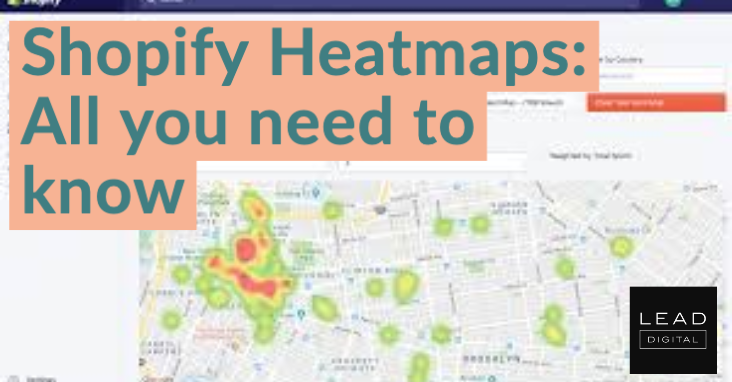 Shopify is one of the most widely used platforms to host eCommerce websites. In fact, in 2019, it reported over one million merchants using it worldwide[1] and more than $135 billion in sales overall.
Shopify is one of the most widely used platforms to host eCommerce websites. In fact, in 2019, it reported over one million merchants using it worldwide[1] and more than $135 billion in sales overall.
Yet, there is very little literature available on the client-side optimization of Shopify hosted eCommerce stores. A quick analysis of the SERP results will tell you that most articles either limit themselves to giving readers a list of tools and apps for Shopify Stores while others touch upon backend and SEO optimization.
This article aims to educate readers who are not familiar with leveraging heatmaps for their Shopify store’s conversion rate and experience optimization. It will navigate your way through the what and how of Shopify Stores, and how heatmaps can help you craft experiences that guarantee increased ROI.
It will also leave you with a list of top 4 free and premium heatmap tools that you can take for a spin for your Shopify store’s optimization. Let’s begin!
What is Shopify & How Do Shopify Stores Work
Shopify is a platform that allows you to build and set up your eCommerce store in minutes. It’s drag and drop online store builder empowers even moms[2] juggling with multiple responsibilities to set up their stores.
In short, Shopify is everything a budding eCommerce entrepreneur could ask for from website development & management platform. Whether you are an artist looking to sell your art online, or an organic farmer who wants to increase returns by expanding operations, Shopify will help you build your website, manage orders, deliveries, payment as well as payment methods, add and edit product images, manage stock, and much more.
In addition to this, Shopify sets a very little limit to what you can sell through your Shopify powered websites or Shopify stores – physical products, digital products, services, memberships, experience-based products and services, ticketed services, and much more.
Shopify Heatmap: Move Your North Star Metrics Upward and to the Right with Heatmaps
Launching an eCommerce store using Shopify may be a fairly simple task, as iterated above, but ensuring that the store converts is a different ball game altogether. To drive consistently growing conversions and deliver stellar experiences that boost repeat buyers, understanding your website performance as well as your website visitors is extremely crucial.
There are 2 types of data that eCommerce stores can leverage to understand how their key website is performing and strategize on improving it: quantitative data and qualitative data. Quantitative website data comes through analytics platforms and tools like Google Analytics. GA tracks key performance metrics like conversion rate, page traffic, traffic source, bounce rate, cart abandonment rate, and other such quantifiable metrics.
For instance, an online merchandise retailer can integrate their website with GA to track how many visitors are dropping off on their checkout page. And let’s assume that the analyst, after looking at the data, realized that the final number of drop-offs on the checkout page stood at a staggering 80%. The analyst is left with one simple question that GA could not answer – WHY? Why was the checkout page drop-off so high? What was making visitors reach the final stage of the purchase funnel and then leave without finishing the purchase?
This is where qualitative research, particularly using heatmaps come into the picture. Heatmaps follow visitors’ journeys end to end and give you a clear picture of why they took the action that they did on your website. Going back to the merchandise retailer example, by looking at the heatmap of the checkout page, the analyst can now identify areas of friction as well as redundant and missing information by taking cues from visitors’ behavior on the checkout page. Visitors are clicking on the payment options drop-down yet not completing a purchase – maybe there aren’t enough payment options; visitors are clicking on the promo code field and dropping off from there – maybe you need to list down available codes in a drop-down; visitors not clicking on the CTA at all – maybe you need to test its copy and placement. Heatmaps enable you to step into your visitors’ and users’ shoes and experience first-hand what they experienced on your website. Such a peek into visitor journeys can equip you with so many actionable insights to act on for your optimization needs.
Because eCommerce is one of the most dynamic and ever-changing industries, it becomes even more important that your Shopify store is in its most optimized form. Let us look at how heatmaps can help in the optimization of Shopify stores and their conversion rate: Read more



